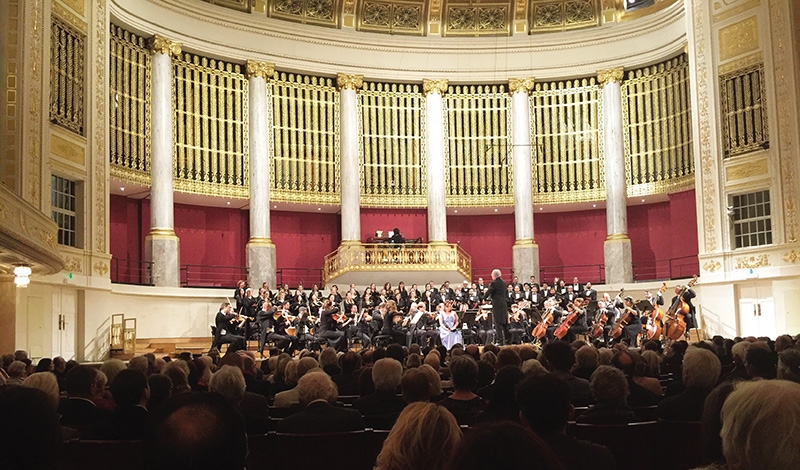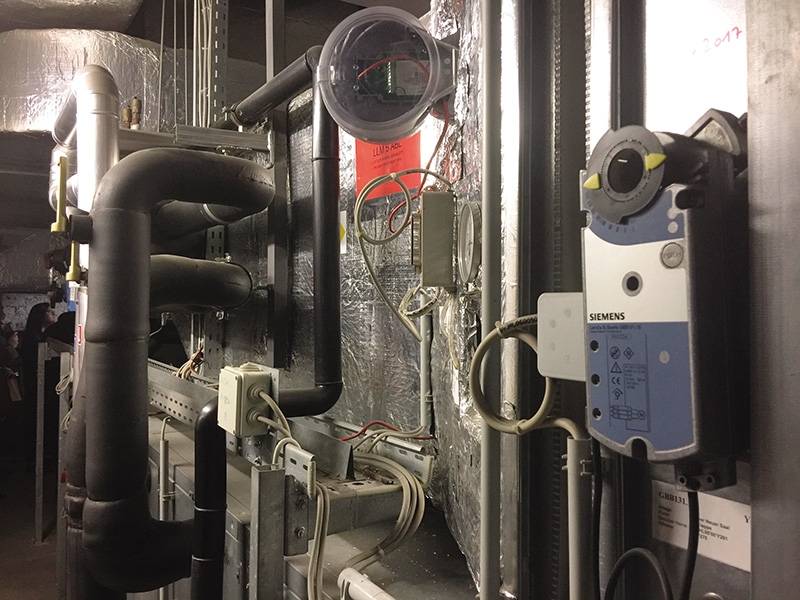Siemens tech helping to preserve cultural landmarks
 |
| Vienna Concert Hall has become a smart building thanks to Siemens technologies |
The concept of a smart city usually involves smart mobility, green buildings, pollution control systems, and e-government, and the term often brings to mind a well-invested city with the most advanced technologies.
Siemens AG, on the other hand, has been striving for something more, with their latest introductions which show how technologies can go a lot smarter in adding new capabilities to old buildings and make even historical buildings smarter and more eco-friendly.
Vienna Concert Hall is one such building. It is one of Austria’s biggest landmarks and thanks to Siemens technologies, it has been turned into a smart building that is qualified for European green building standards.
Vienna Concert Hall is the cultural centre of Vienna. Opened in 1913, it has undergone over 100 years of history, survived two world wars, and has always been the favourite venue for important cultural and social events. In the 2017-2018 season, the Concert Hall welcomed a record number of visitors with 595,000 people attending 934 events.
The building underwent several upgrades and rounds of maintenance to create an environment with suitable humidity, temperature, and airflow in order to serve around 2,000 people at each night’s performance.
But turning a historical building into a smart building without changing its architecture is another story. And Siemens with its state-of-the-art technology solutions can “make things happen” in the construction field.
 |
| The central control framework operates various systems according to indoor needs |
Gregor Glatz, head of Solutions and Services for Smart Infrastructure at Siemens Austria, said that a building, when considered “smart”, must have the lowest emissions, which is the first but most challenging requirement. With conventional technology, the concert hall could still function like thousands of other concert halls over the world, but when energy was not optimised in ventilation, electricity, water systems, and in heating and cooling, substantial amounts of energy would be wasted, leading to higher emissions.
The central control system of Siemens operates electricity and water systems, ventilation, windows, and shades according to outside weather conditions and indoor requirements. The solution from Siemens is based on thousands of sensors which help calculate audience numbers in real-time through AI-assisted software, and which optimises the power for maintaining humidity, oxygen levels, temperature, and lighting as needed.
“All the steam heating systems, power lines, and ventilation systems are original and received a minimal upgrade, but they are supported by digital technologies to be smarter. For example, the ventilation is from under the main stage’s floor instead of using an air pipe, which creates fresher air for the audience while less energy is required. Additionally, the cooling system is connected with a nearby ice rink to utilise excess power in summertime,” said Glatz.
“All the small details are calculated in a way that optimises energy usage, which helps the building achieve the lowest emissions and meet all strict standards of a smart building,” he added.
Siemens’ smart city technologies have been implemented globally, and have not only helped to create new and modern cities, but also opened up the possibility of renovating old cities and buildings, thus making them smarter and more environmentally-friendly.
Technologies help to improve the quality of life, and new research and innovations from Siemens have provided extended dimension applications in many areas beyond the imagination of urban residents.
Siemens sees microgrids as the future of energy management. The company offers an encompassing portfolio that comprises products, solutions, and services for the erection and operation of microgrids of all sizes. Microgrids can be operated on-grid (connected to the network) and off-grid (network-independent). They utilise a wide range of energy sources, such as solar and wind parks. They represent a cost-effective, sustainable, and reliable form of electricity generation.
Smart buildings are developed on the basis of employing Siemens’ Building Management System in collaboration with other smart ICT. For instance, at Siemens’ new headquarters in Munich and the Seestadt Aspern project in Vienna, the Siemens DESIGO building management platform is used to control the building’s technology around the clock.
The system controls the entire heating, ventilation, and air conditioning systems. In addition, DESIGO controls the lighting and shading as well as the intrusion-protection, access-control, and fire protection systems.
In the Seestadt Aspern project, the most advanced building technologies have been used to ensure the buildings have independent electricity and heat generation capabilities such as heat pumps, photovoltaic systems, and solar thermal systems, and can, therefore, significantly reduce their CO2 emissions when used in conjunction with thermal and electrical storage technologies. Storage solutions can balance out energy supply and demand. All have contributed to higher energy efficiency, lower greenhouse emissions, and a greater quality of life for residents.
What the stars mean:
★ Poor ★ ★ Promising ★★★ Good ★★★★ Very good ★★★★★ Exceptional
Related Contents
Latest News
More News
- Businesses ramp up production as year-end orders surge (December 30, 2025 | 10:05)
- Vietjet chairwoman awarded Labour Hero title (December 29, 2025 | 13:06)
- How to unlock ESG value through green innovation (December 29, 2025 | 10:03)
- AI reshapes media and advertising industry (December 29, 2025 | 08:33)
- FPT and GELEX sign deal to develop blockchain tech for global markets (December 29, 2025 | 08:29)
- Vietnam’s GDP forecast to grow by 9 per cent in 2026 (December 29, 2025 | 08:29)
- Women entrepreneurs are key to Vietnam’s economic growth (December 29, 2025 | 08:00)
- Vietnam's top 500 value-creating enterprises announced (December 27, 2025 | 08:00)
- The PAN Group shaping a better future with ESG strategy (December 26, 2025 | 09:00)
- Masan Consumer officially lists on HSX, marking the next phase of value creation (December 25, 2025 | 13:20)

 Tag:
Tag:





















 Mobile Version
Mobile Version